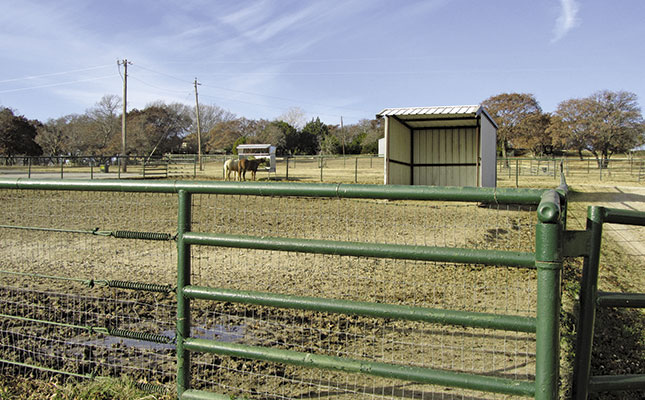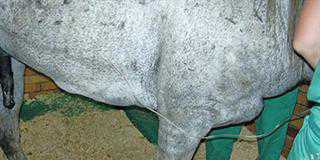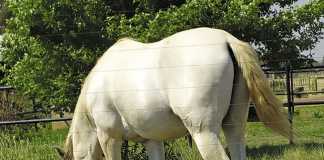
A ‘paddock’ is an enclosed area where one or more horses are kept. At a riding school, a group of small paddocks around the stables is sometimes called a ‘yard’. Larger planted lands where horses graze are called paddocks. The size might vary from a few square metres to several hectares, but what all paddocks have in common is a need for safe fencing. Too many injuries in horses are related to poorly constructed paddock fences.
Paddock design
The perfect paddock should be easy to care for. It is also a good idea to situate your stables and paddocks on higher ground so that they stay dry in the rainy season. Paddocks should slope away from the arenas to prevent manure and urine run-off from entering the areas where the horses are worked.
They should also be fairly close to the stables so that it is easier to take the horses out and remove manure every three days. If possible, provide a shaded area to protect the horses from sun, rain and hail. Avoid planting trees for this purpose if lightning is common in the area. Horses sheltering under a tree can be killed if the tree is struck.
Fencing
The most popular paddock fencing in South Africa is a post and rail fence using treated gum poles. These are affordable and easily available. The posts should be between 100mm and 125mm in diameter and about 1,8m long. They are buried to a
depth of 60cm in concrete, so the eventual height of each post is 1,2m.
The rails are 75mm to 100mm in diameter and 2m to 3m long. They can be attached to the posts using 10mm threaded rods with nuts and washers. Bloudraad can also be used, but the ends of the wire must be turned back and hammered into the wood to prevent injuries. The spacing between uprights is between 1,8m and 2,8m, and there is an overlap of about 100mm on each side.
Electricity –flexible usage
Electric fencing can be set up on its own or with gum pole fences. If used on its own, electric fencing allows paddocks to be rapidly broken down and rebuilt. For horses, it is essential to use flat electric tape, as thin wires can twist around their legs, cutting through skin and tendons.
The height should be at least 1,2m and poles should be planted no more than 2m apart as the tape tends to sag. At least two strands are required. A disadvantage of electric fences is that they have to be renewed every three to four years, whereas a well-made gum pole fence can last 20 years or more.
Advantages of Metal
In the USA, metal fencing is common at training stables and riding schools. Fewer cross poles are needed if small-aperture pig fencing is welded onto the cross poles and uprights. Also available are well-constructed metal gates designed specifically for horses, but these are not often seen in South Africa. Although expensive, metal fencing is probably the safest of all. It is also long-lasting and easily maintained.













